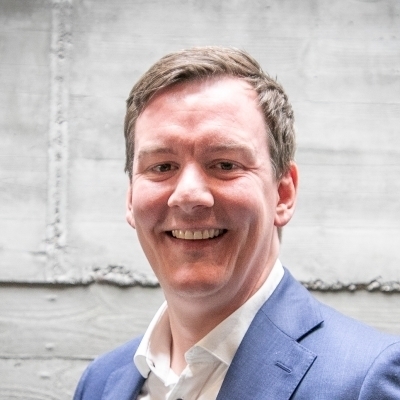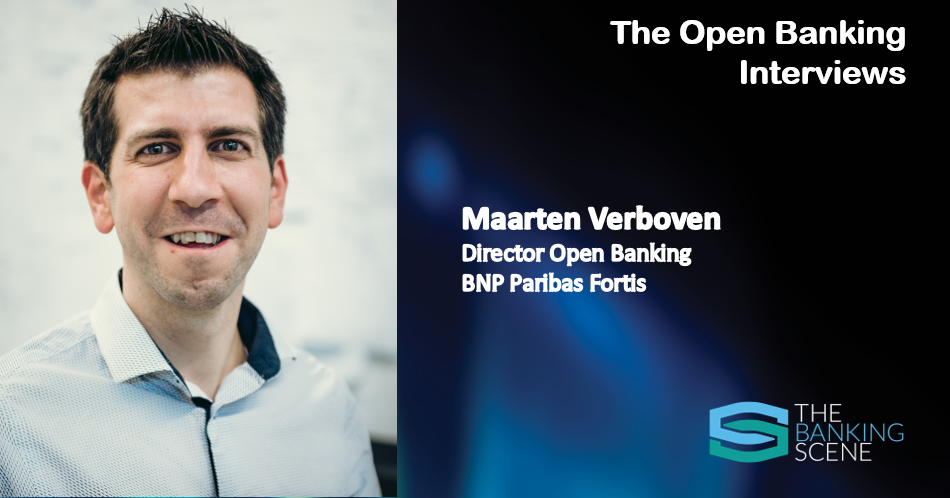
Insights & Opinions
The Open Banking Interviews: Maarten Verboven, Director of Open Banking, BNP Paribas Fortis
Tue, 27 Aug 2019

This week’s Open Banking Interview is with Maarten Verboven, Director of Open Banking at Belgium’s largest bank: BNP Paribas Fortis. Their collaboration with Tink and their recent new initiative Didid, a smartphone application that allows you to create your digital bucket list, provided a lot of food for thought to reflect on the future of banking.
Part X of The Open Banking Interviews (see part IX, with Reinout Temmerman, Payments Advisor at National Bank of Belgium).

BNP Paribas Fortis is the largest bank in Belgium. I saw that you have an API platform live already and that you are collaborating with Tink. How do you position both initiatives next to each other?
You are referring to our Open Banking Portal, where developers can find out all about the services we can provide via API’s. This portal supports our “Bank as a Service” initiatives. It allows us to distribute our products and services via third party channels. This is a way to respect the channel preference of our customers and to be there where they intuitively expect us to be.
The second initiative you are referring too — our collaboration with Tink — allows us to do the opposite. It allows us to enrich our own distribution channels with services from third parties (“Bank as a Platform” initiatives).
A first example of that is account aggregation: in February 2019, we launched the first multi-bank version of our banking app, allowing our customers to consult balances and past transactions across all their current and savings accounts held with a number of major banks in Belgium.
How do you see these BaaP-initiatives evolve?
When you look at the Scandinavian market, for example, you’ll see that aggregation clearly goes beyond payments. From a customer perspective, this absolutely makes sense. Many customers have products at different banks: it’s very convenient for those multi-banked customers to have all their financial assets in one real-time overview. That’s something that all banks are looking into.
And Tink is supporting you in this?
Tink offers various technical solutions s.a. Account Aggregation, Personal Finance Management and Product Recommendations. Tink’s strength is that they have grown from a B2C-company. Although they position themselves as a technology provider towards banks like ours, Tink is an extremely customer-centric company. In the Swedish market, they offer their financial services directly to the end-consumer, which allows them to fully focus on those technical solutions for which there is a strong customer need.
Didid is a recent, new initiative of BNP Paribas Fortis, founded by yourself. Is that something that we should see in light of PSD2?
It’s something that you should at least see in the broader context of Open Banking.
Let me put it this way: banking has always been about realizing dreams. If I would tell that to my friends in a pub on a Friday evening, they would probably laugh at me, but it’s true.
Whether it’s via a mortgage allowing someone to buy the house of his dreams or by granting a professional loan, enabling someone to start the company of his dreams: banking is all about realizing dreams.
However, it doesn’t always feel that way. In the past, banks have been way to product-oriented. With Didid, we try to turn that model completely inside out. Didid is a smartphone application that allows you to create your digital bucket list. It allows you to log all the things you want to realize in life in one place. And once you have created your bucket list in Didid, the application will motivate and help you to turn these dreams into reality. When relevant, Didid might propose a product or service (financial or non-financial) that can help you to realize your dream. But at all times, your dreams will be the core of the application.
So, what Didid has in common with traditional banking is that it’s about realizing dreams. But the way Didid does it, is very different from how banks did it in the past.
But to come back to your question: yes, Didid is indeed strongly linked to PSD2. Didid is a separate legal entity, one of the first TPP’s being grated an AISP/PISP-license by the National Bank.
There are two big advantages to this. On the one hand, it helped BNP Paribas Fortis to work with API’s. On the other hand, the Didid-initiative learns us to think like a TPP. Thanks to Didid, BNP Paribas Fortis learned to understand the challenges of a TPP, which is extremely valuable, because, in an Open Banking-context, these TPP’s increasingly become our direct customers.
I see PSD2 as a starting point of a whole new journey, the one of Open Banking, which goes far beyond PSD2 and also beyond payments. I call that ‘the journey to everywhere banking’. How do you look at this and are we moving to a completely different way of banking?
I think so. We are moving towards much more seamless banking, where the relevant financial solutions are integrated there where the customer needs them. For this, there are 2 options:
- banks manage the entire customer journey and integrate non-banking services next to their traditional financial services. That’s then what we call Bank-as-a-Platform (BaaP).
- banks seamlessly integrate their products and services in a third-party channel. That’s what we call Bank-as-Service (BaaS).
So, you’ll increasingly see banks cooperate with non-banks. You’ll see ecosystems emerge around themes such as Mobility, or Living, or Health,… And the question banks are asking themselves is whén to choose for a BaaP-model and whén to choose for a BaaS-model.
There are certain user journeys where banks have more legitimacy to orchestrate the ecosystems themselves (think for example of Hello Home: Hello bank’s platform that helps people along the entire user journey of purchasing a new home).
And there are certain ecosystems where banks have very little legitimacy (think for example of booking a vacation), but where it would be relevant to integrate products s.a. travel insurance directly in a third party platform.
What we can learn from all of this, is twofold:
1) The time where the different sectors were organized as vertical silos is over: we see more and more horizontal integrations of services in all different directions. To come back to Didid: it’s very tricky to define in what sector Didid is active. Is it a social platform? Is it an e-commerce platform?… It’s definitely not a bank. The question of sectors is however not relevant anymore. Sectors as such completely fade away, they become more and more integrated.
2) The customer will be the big winner of this evolution: whereas today, the customer needs to navigate through different sectors, tomorrow this customer will be served in one-stop-shops. One platform that covers all solutions concerning one specific customer needs.
What according to you is the main challenge in getting your organization to move to this new way of thinking about potentials opportunities with third parties?
That’s a very good question and it is indeed a big challenge. A key success factor is getting the employees to see the opportunities of Open Banking. When we started focusing on Open Banking about two years ago, the employees of BNP Paribas Fortis saw a lot the threats of Open Banking, the threats of PSD2, the threats of account aggregation, … but very few people saw the opportunities.
In fact, there are a lot more opportunities than threats related to Open banking, but as long as your staff doesn’t see those opportunities, you don’t get the right projects on the roadmap. So, an important aspect of the mission of our Open Banking-team is to continuously work on the level of awareness and education.
In terms of next-level Open Banking, what do you see as key trends for 2020 and beyond when you look at consumers?
One of the buzzwords of 2019 and it will probably continue to be a buzzword in 2020, is ecosystems. Everybody is talking about ecosystems, but not everybody has the same understanding of the concept.
When I talk about ecosystems, I’m referring to cross-industry collaborations, resulting in customer solutions that leverage the assets of each of the ecosystem-participants.
The beautiful thing about these ecosystems is that the value generated by the ecosystem is larger than the combined value that each of the players could contribute individually.
However, evolving towards ecosystem-solutions demands an important mind shift inside an organisation. Not wanting to own every single component of the equation, and giving up a certain degree of control is something that big corporates haven’t been used to.
I feel inside our organization, that we have made that mind shift. We realize that we can have a lot more impact on the market and that we can create much more customer-value when teaming up with the right partners.
I think we will see a lot of use cases in 2020 where companies of different sectors come together with solutions that ease the life of the customer. So for me, ecosystems will be the next big thing.
In terms of next-level Open Banking, what do you see as key trends for 2020 and beyond when you look at SMEs? Is there any difference with consumers?
For SMEs, it’s exactly the same. You see that a lot of banks in their Open Banking reflections are focusing even more on SMEs than on individuals. I see two reasons:
1) The complexity of their needs: SME’s often have more complex needs. And “complexity” equals “opportunity”.
2) Their willingness to pay: if banks — or the ecosystems they become part of — manage to make the life of their SME-customers less complex, if they manage to let SME’s save time on administration, on HR-aspects,… so that the SME can fully focus on its’ core business, these SME’s will be willing to pay the right price for that service.
This story is part of a series of interviews with executives of the financial services industry.
The complete list of Open Banking Interviews can be found here.
Make sure you follow The Banking Scene on LinkedIn, and subscribe to our newsletter for the latest news.